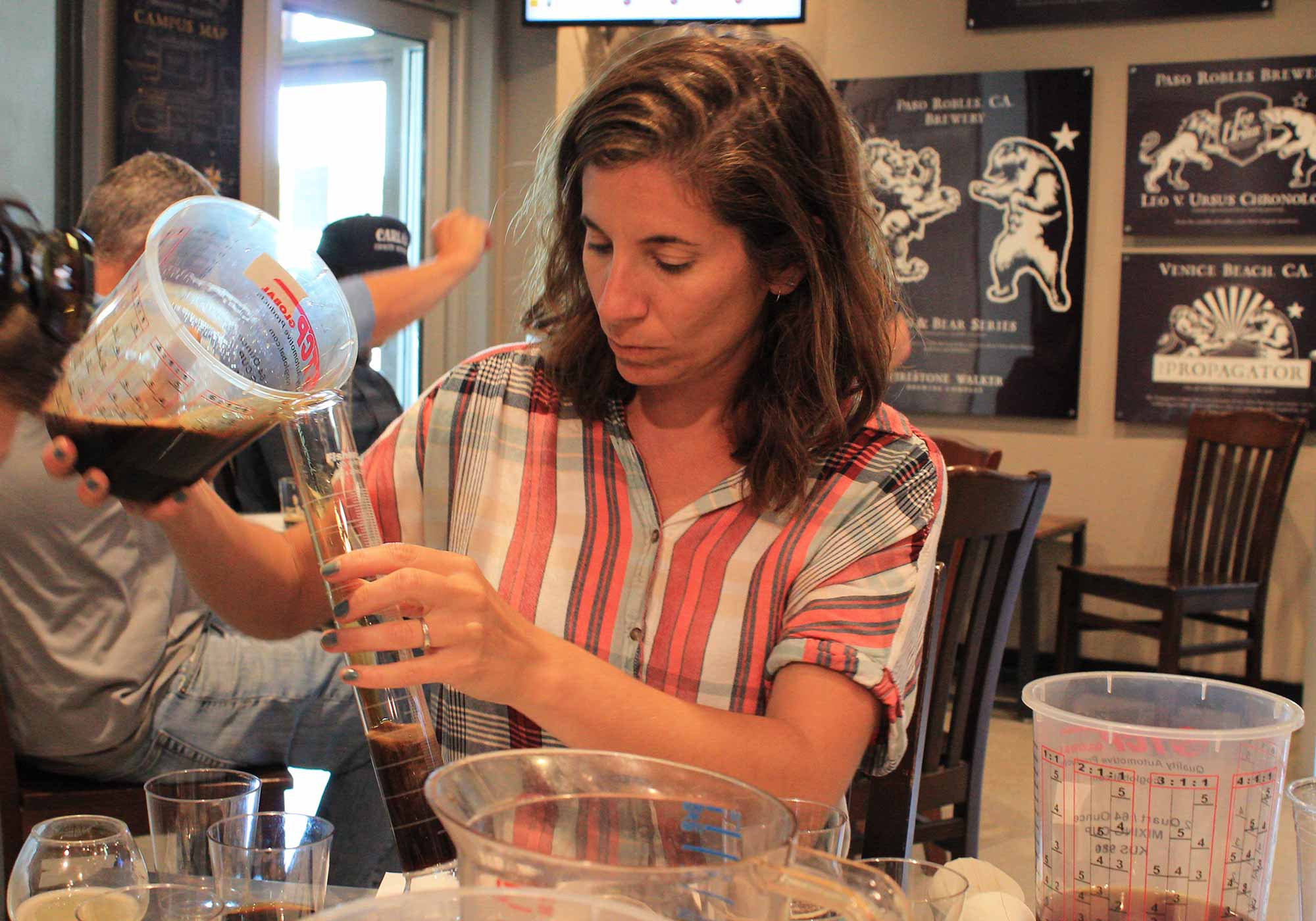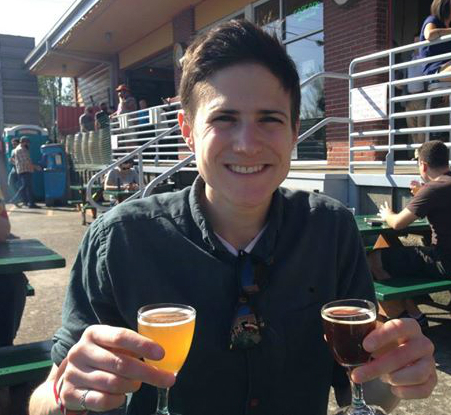Shop
Winemakers Blend Firestone Walker’s 25th Anniversary Beer
Blending Firestone Walker's 25th Anniversary Ale
In front of me sat pipettes, beakers, and pitchers of five of Firestone Walker’s best barrel-aged beers of 2021. And beside me sat three of the California Central Coast’s best women winemakers. Around the room were similar setups for ten other winemakers. Our mission? Taste each beer and carefully pipe out as much of Parabola, Stickee Monkee, Brandy Barrel Barley Wine, Whiskey Barrel Wheat Wine, and Tequila Barrel Velvet Merkin as we wanted to create one final, incredible Firestone Walker beer.
Along with five other teams, we vied to blend the best recipe. The winning team would be crowned champion supreme. And the victorious blend would become Firestone Walker’s 25th Anniversary Ale, which officially released to the public on Tuesday, Oct. 26th, 2021.
This is a tradition that has happened at Firestone Walker in Paso Robles, California, every fall since 2006. It’s a chance to celebrate an anniversary and to reflect on a year in beer. And with the 25th Anniversary happening this year, our group had a particularly daunting task.
Let the blending begin!
Firestone Walker Celebrates Its 25th Anniversary
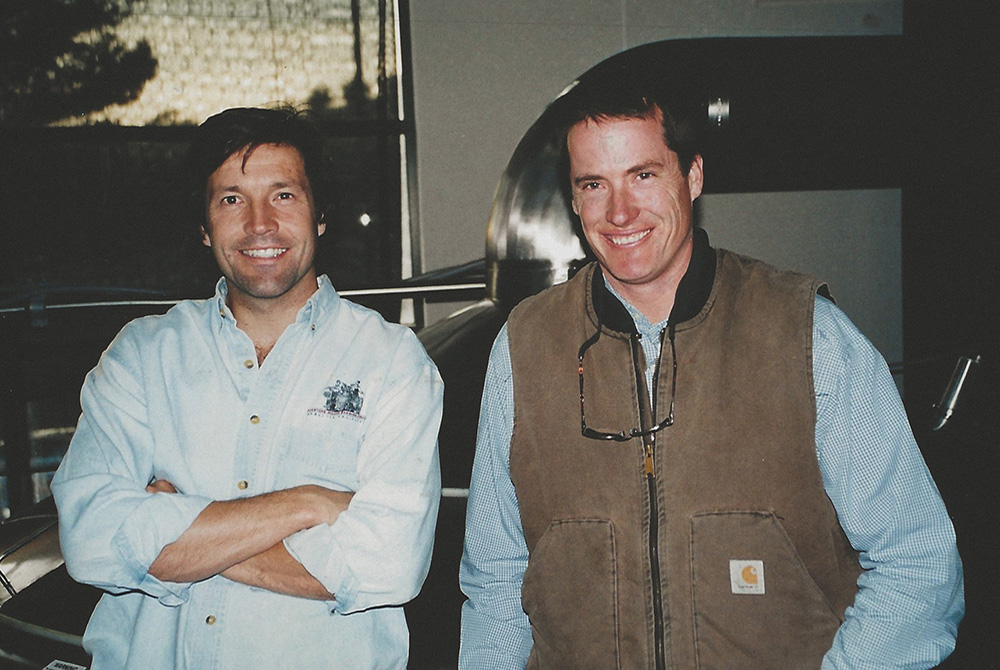
Photography courtesy of Firestone Walker Brewing Company
To understand why Firestone Walker blends an anniversary ale, you first need a glimpse into the iconic brewery’s past.
Twenty-five years ago, Firestone Walker started on a forty-acre Chardonnay Vineyard. Cobbling together brewing equipment that included wine tanks, dairy tanks, and used brewing equipment, Co-Founders David Walker and Adam Firestone started a primitive brewery on a novel concept, at least for the Americas: brewing exclusively barrel-fermented ales.
“Our expectations were simply to make beautiful beer for the small winemaking community we were a part of,” says Walker in a previous article for Hop Culture.
Since then, Firestone Walker has pushed the boundaries of American craft beer. Especially once they broke out of the barrel-fermented mold.
In 2000, the brewery released Firestone Lager –- well ahead of its time for a craft lager. In 2012, Pivo Pils trailblazed the hoppy craft pilsner style. Union Jack, Firestone Walker’s version of the classic West Coast IPA, helped set the tone for another movement. In 2012, the brewery launched Barrelworks, an entire facility dedicated just to sours. And more recently, the brewery started an entire IPA series called Luponic Distortion. And on the barrel-aged side, beers like Parabola and Stickee Monkee have become phenoms.
So it makes sense that in 2006, the Central California-based brewery turned back to its barrel-fermented and winemaking roots to celebrate its tenth anniversary with an anniversary ale made from a blend of bourbon barrel-aged beer.
Revisiting Firestone Walker’s 10th Anniversary
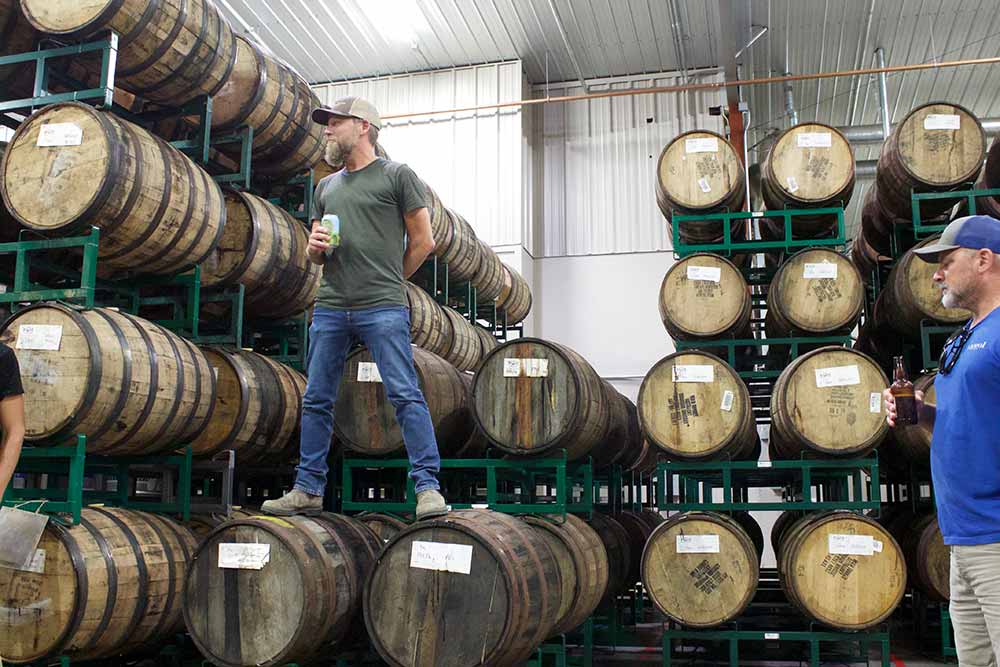
In 2006, Firestone Walker had a banner year. It was the first time that the brewery released an IPA — Union Jack. Prior to that, the portfolio had stayed pretty conservative with Double Barrel Ale, Lager, Pale 31, and a seasonal porter. That was as far as Firestone Walker strayed from beer fermented in oak.
For the occasion, Brewmaster Matt Brynildson wanted to do something special. In the nineties, he’d spent time at Goose Island, where founder John Hall invented the concept of barrel-aged beer with Bourbon County Stout. As a result, Brynildson knew how to make phenomenal barrel-aged beer, but he held back.
“I was desperately trying to differentiate from Goose Island and purposely didn’t want to do a barrel-aging program because I felt like that was John’s deal,” says Brynildson, referring to John Hall of Goose Island.
But after ten years of dragging his heels, Brynildson relented.
Bringing Barrel-Aged Beer to Firestone Walker
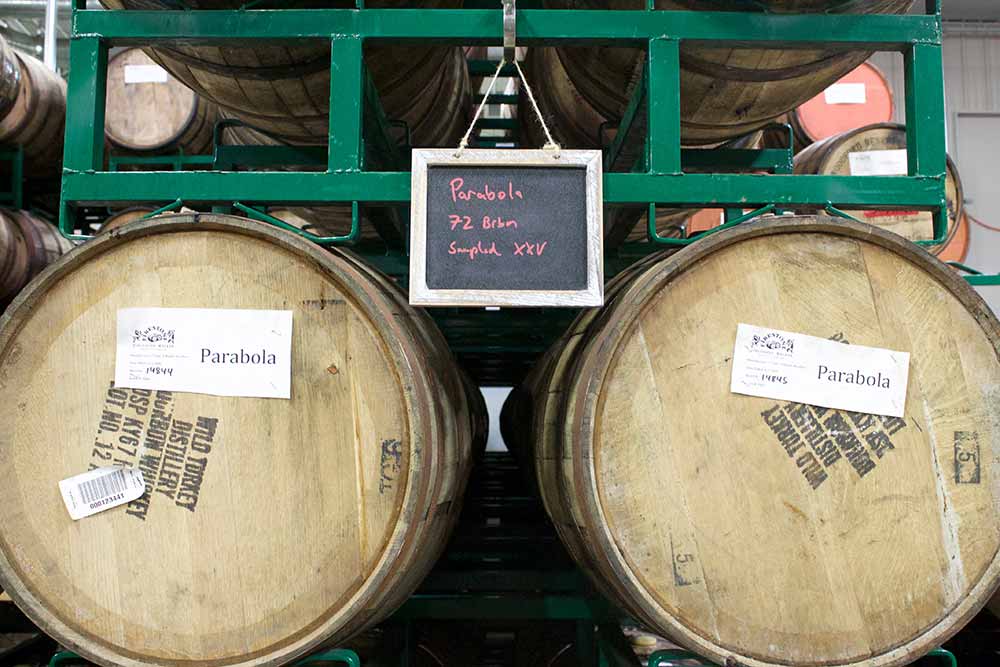
“In many ways, Tom Griffin is the Johnny Appleseed of modern barrel programs,” says Brynildson. “He was like a prophet… It wasn’t until Tom knocked on the door at Firestone and begged me to take barrels that I was like, ‘All right, all right.'”
Today, Griffin is out of the barrel game, but Brynildson cites his importance in the development of barrel-aged beer. Still, with five or six test batches ready to come out of barrels for Firestone Walker’s 10th anniversary, Brynildson still didn’t know which one he wanted to represent the brewery’s special occasion.
Until the proverbial light bulb went off.
“I thought, We could blend these together to make the anniversary beer,” says Brynildson. “And who knows blending better than the wine folks? I should call them up to see if they’ll give us a hand.”
The idea worked. And the anniversary beer, a limited-edition oak-aged strong ale called “10,” put Firestone Walker on the map in new places.
“Suddenly, we had people calling from the East Coast saying, ‘I haven’t heard of Firestone Walker, but I tried this barrel-aged beer and it blew my mind,’” says Brynildson. “It was the first time we drew in the artisanal beer geek and got a little bit more love.”
After that inaugural anniversary release, Brynildson took off his own handcuffs. And an annual autumn rite was born.
The Importance of Winemakers in Blending Beer
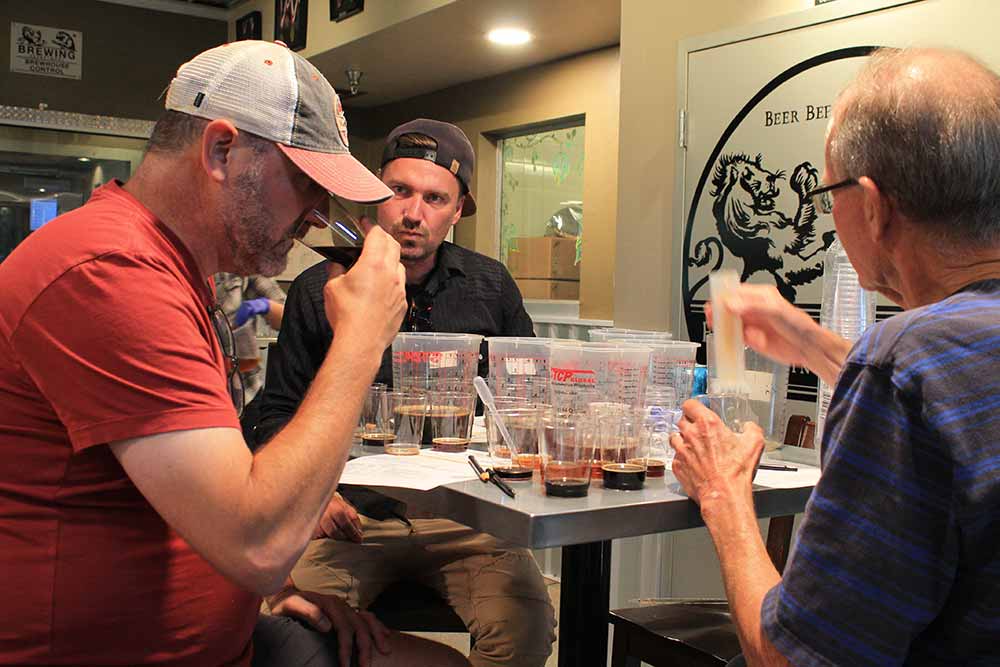
Firestone Walker’s yearly anniversary ale is blended by local winemakers.
Every year in the late summer, right before the wine harvest, Brynildson invites a select number of Central California winemakers to help him blend a selection of that year’s barrel-aged beers.
In the past, well-known winemakers such as Matt Trevisan of Linne Calodo, Sherman Thacher from Thacher Winery and Vineyard, Neil Collins from Tablas Creek Vineyard, and Russell From from Herman Story Wines have all participated.
It’s a win-win for Brynildson, who says burrowing into a winemaker’s brain is invaluable in the blending.
“They definitely taste differently than we do,” he says. “They use a different lexicon to explain what they taste and they’re hyper-focused on textures. Winemakers look for subtleties. Although nine times out of ten, the blend they make is the most aggressive beer.”
It was winemakers who created beers like 2019’s XXIII, a 11.5% ABV behemoth that featured a blend of:
- 28% Stickee Monkee (a Central Coast quad) aged in bourbon barrels.
- 28% Parabola (a Russian Imperial stout) aged in bourbon barrels.
- 20% Bravo (an Imperial brown ale) aged in bourbon barrels.
- 15% Bourbon Barrel Helldorado (a blonde barleywine) aged in bourbon barrels.
- 5% Velvet Merkin (a milk stout) aged in bourbon barrels.
- 4% Tequila Barrel Helldorado aged in tequila barrels.
Blending Anniversary Ale: A Coveted Ticket
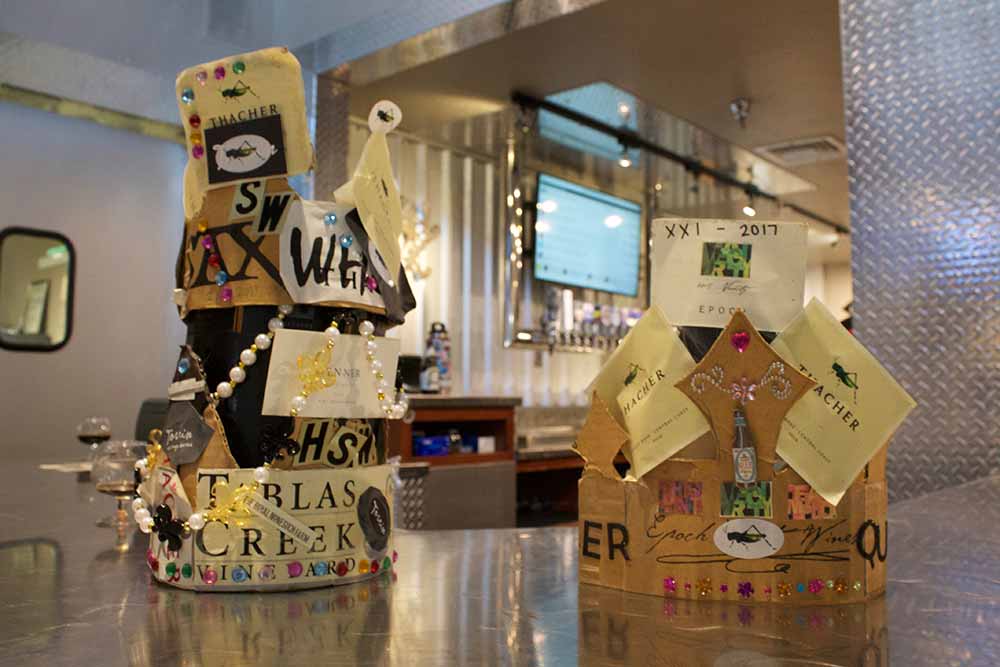
In the first year that Brynildson invited winemakers to Firestone Walker, about six Paso Robles and Santa Barbara County winemakers participated.
“Next thing I knew, we had a room full of thirty people,” says Brynildson. “They were so pumped about it that the next year, that they were climbing over each other to get in.”
Over the years, the annual blending event has become more like an Olympic competition. The winning winemakers have even created their own crown that they pass between themselves as a trophy.
As the tradition grew, so did the excitement. One year, the winning team came into Paso Robles in a rented limo, wearing camouflage tuxedos.
Welcome to the 2021 Anniversary Ale Blending at Firestone Walker
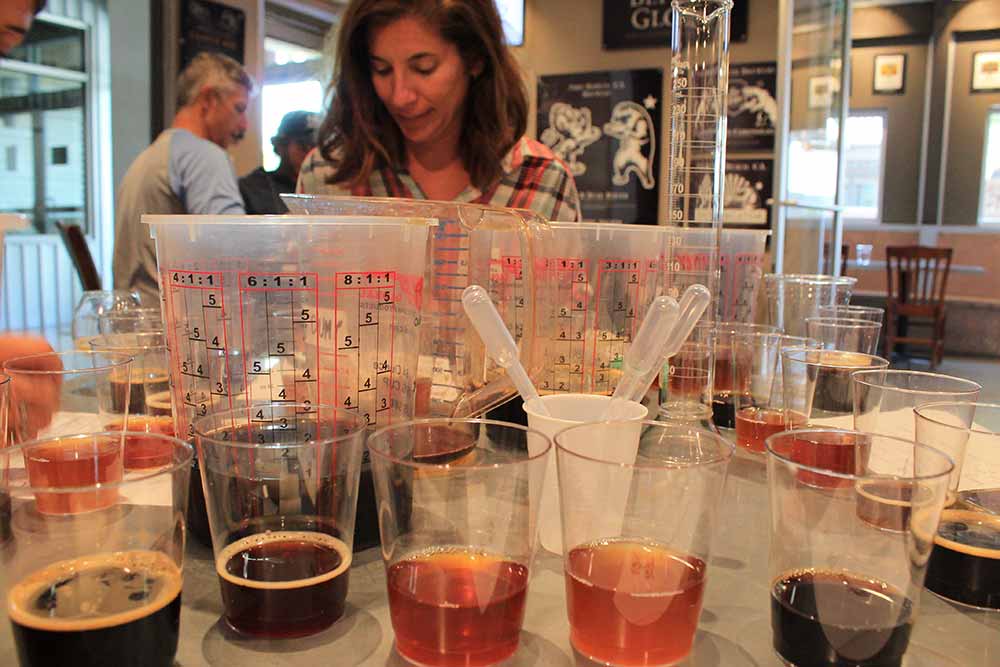
This year, thirteen winemakers participated in Firestone Walker’s annual anniversary ale blending. On paper, the process looked pretty simple. Get a bunch of winemakers (and me) into a room, have them split themselves into teams (I joined a table of three lady winemakers), ask them to come up with a team name (Bitches Brew), give them a bunch of pipettes and pitchers of barrel-aged beer, and let them do their thing.
But everyone has their own approach.
“I taste through everything and take notes on the structure,” says Chelsea Franchi, Senior Assistant Winemaker at Tablas Creek. “Once I have my notes, I approach it like blending wine.”
Franchi should know. A seven-time participant in the annual tradition, she won the whole shebang in 2013 when she paired with her colleague Neil Collins, the Executive Winemaker at Tablas Creek.
“I’ve been riding that high ever since,” said Franchi.
What does it take to win?
“It has to be big,” says Jordan Fiorentini, Winemaker at Epoch Estate Wines.
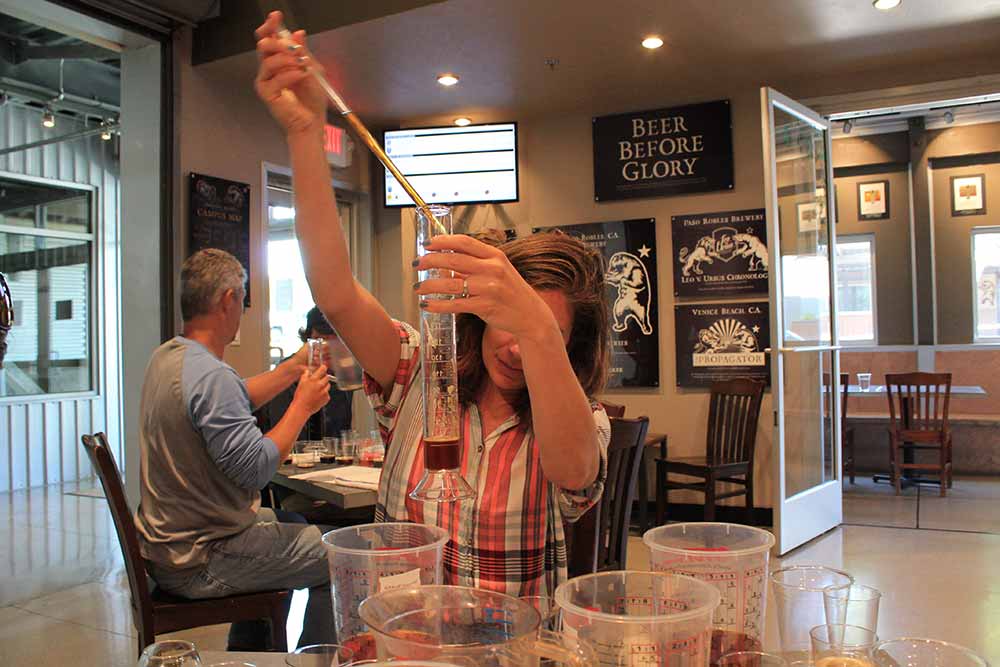
Valia From, winemaker and owner of Desparada Wines, whose husband Russell From is the winemaker and director of operations at Herman Story Wines, agrees.
“The winning beers are all really big and over the top,” she says.
Blending the Beer We Wanted to Drink
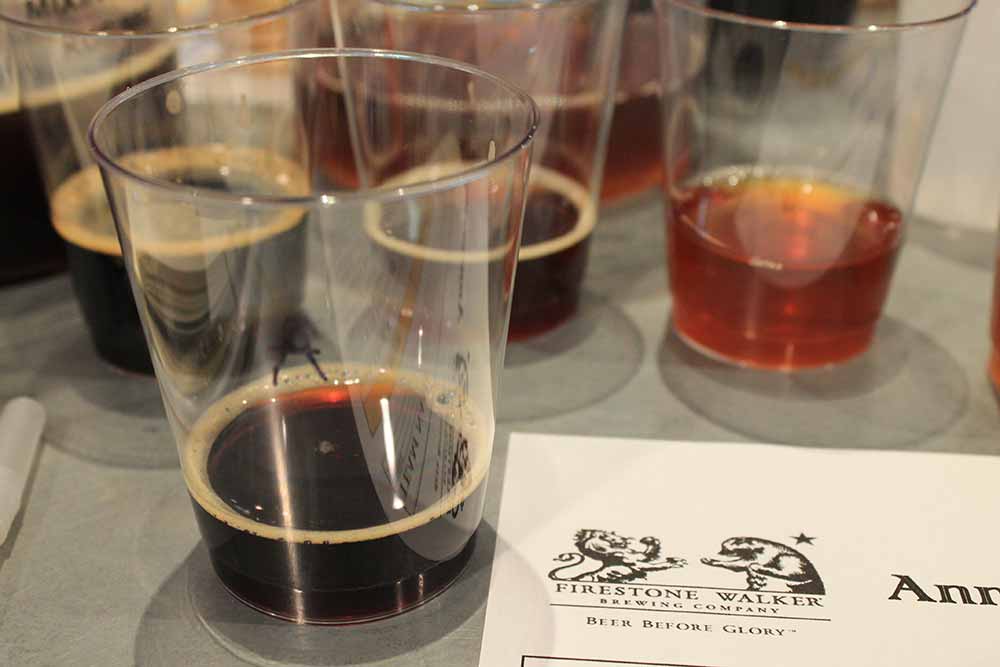
At our table, we decided to forgo the “bigger is better” advice.
“You go into this blending process knowing that the biggest, boldest beer is going to be the one that takes home the crown,” says Franchi. “But for Jordan, Valia, and myself, we prefer beers that are a little softer and rounder on the palette. So we stuck to our guns and made a beer we wanted to drink.”
This year, teams had five components to use: Parabola, Stickee Monkee, Brandy Barrel Barley Wine, Whiskey Barrel Wheat Wine, and Tequila Barrel Velvet Merkin. According to Brynildson, Parabola and Stickee Monkee are pretty much staples on the bottle list, but Brandy Barrel Barley Wine and Whiskey Wheat Wine were newcomers this year.
“The Whiskey Barrel Wheat Wine was great to have in the arsenal,” says Franchi. “With a lot of the beers having a lot of dark chocolate, coffee, burnt sugar, and toffee notes, that beer brought a really pretty element — more brightness, more freshness, and a little more acidity.”
Chasing the Firestone Walker Blending Crown
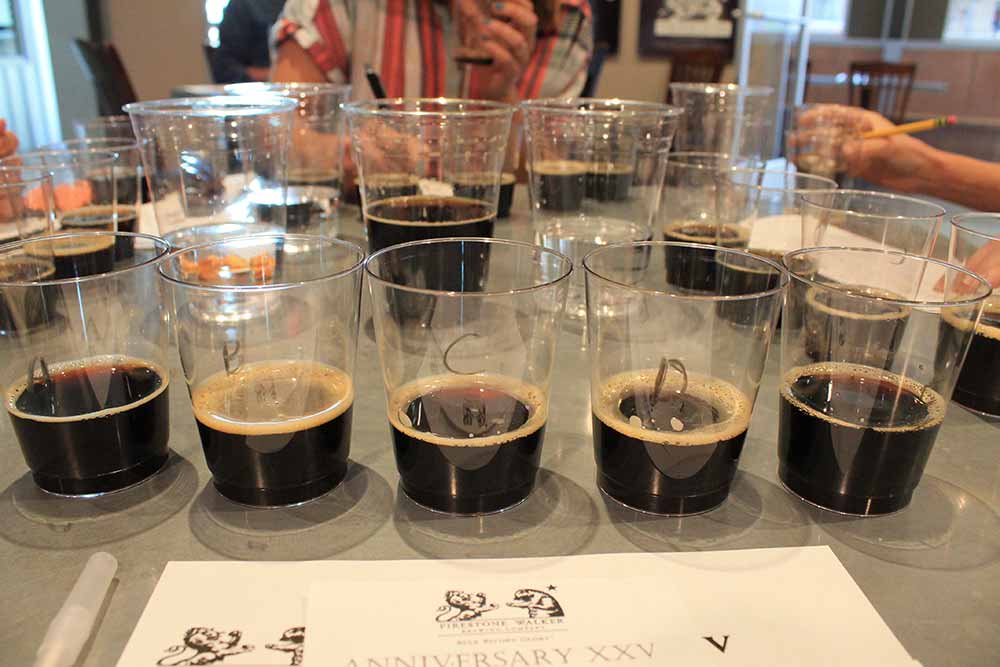
With the thought of placing the makeshift crown upon our heads, our team tasted through each of the five beers in front of us.
“The Barleywine is sweet, but has a lot of nice bright acidity and some citrus notes,” said Valia.
“I like that Parabola has a lot of bitterness and coffee character,” said Fiorentini.
During the blending process, we were allowed to mix as many different versions as we wanted and taste through them before picking our favorite to represent our team. So we made three different blends, tweaking the percentage of beer in each one based on what we tasted.
Our first blend (“Blend A”) included:
Blend A
41% Parabola
3% Stickee Monkee
18% Brandy Barrel Barley Wine
18% Whiskey Barrel Wheat Wine
20% Tequila Barrel Velvet Merkin
After finding it a bit too sweet for our liking, we changed things up, reducing the amount of Brandy Barrel Barley Wine and Whiskey Barrel Wheat Wine. And we increased the percentage of Tequila Barrel Velvet Merkin.
Our second blend (“Blend B”) included:
Blend B
41% Parabola
2% Stickee Monkee
8% Brandy Barrel Barley Wine
2% Whiskey Barrel Wheat Wine
29% Tequila Barrel Velvet Merkin
“This feels a lot more sticky than the first one,” said Franchi. But still, we weren’t satisfied. Our final blend (“Blend C”) toyed again with the levels of Brandy Barrel Barley Wine and Whiskey Barrel Wheat Wine and included:
Blend C
41% Parabola
4% Stickee Monkee
10% Brandy Barrel Barley Wine
16% Whiskey Barrel Wheat Wine
29% Tequila Barrel Velvet Merkin
With the appearance of Coca-Cola, a pleasant balance of bitterness from the Parabola and sweetness, and a nice, textured finish, we thought we had the winning recipe.
The Winning Blend of Firestone Walker’s 2021 Blending Competition
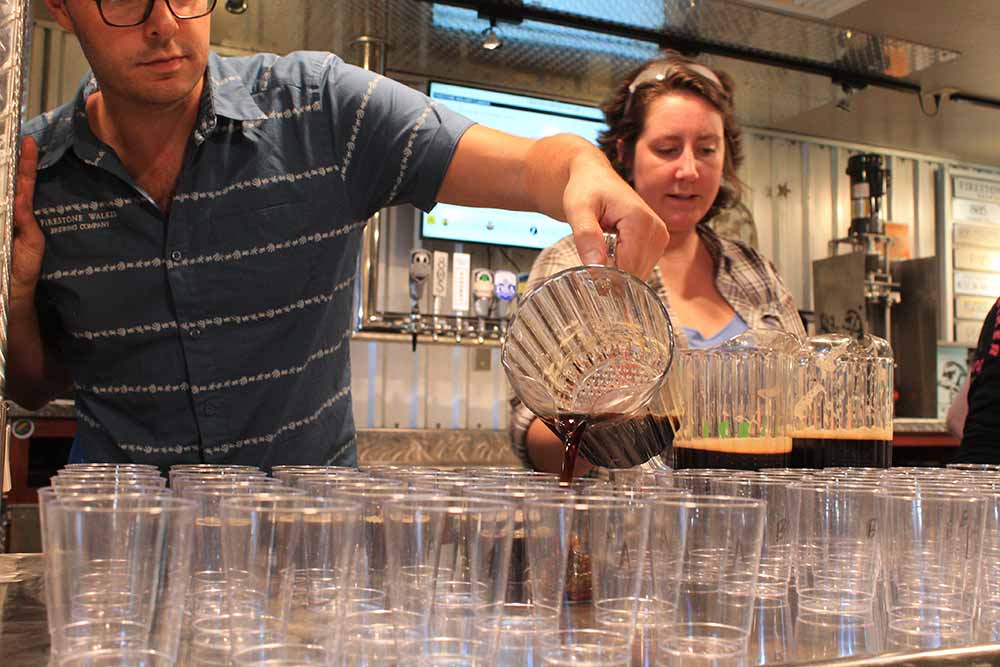
After each team handed in their final blend, Brynildson and his team went behind the scenes to make bigger batches of potentially prized blends.
Then, each person in the room tasted the blends and scored them individually. The overall winner would become the new Firestone Walker Anniversary Ale vintage.
According to Brynildson, the winemakers usually choose a championship blend pretty decisively.
“It’s never just by a hair,” he says.
In the past, the winning recipe usually includes a significant amount of Parabola. There have only been one or two blends in history that haven’t included this famous beer.
And this year wasn’t any different.
Introducing Firestone Walker’s 25th Anniversary Ale Limited Edition Release
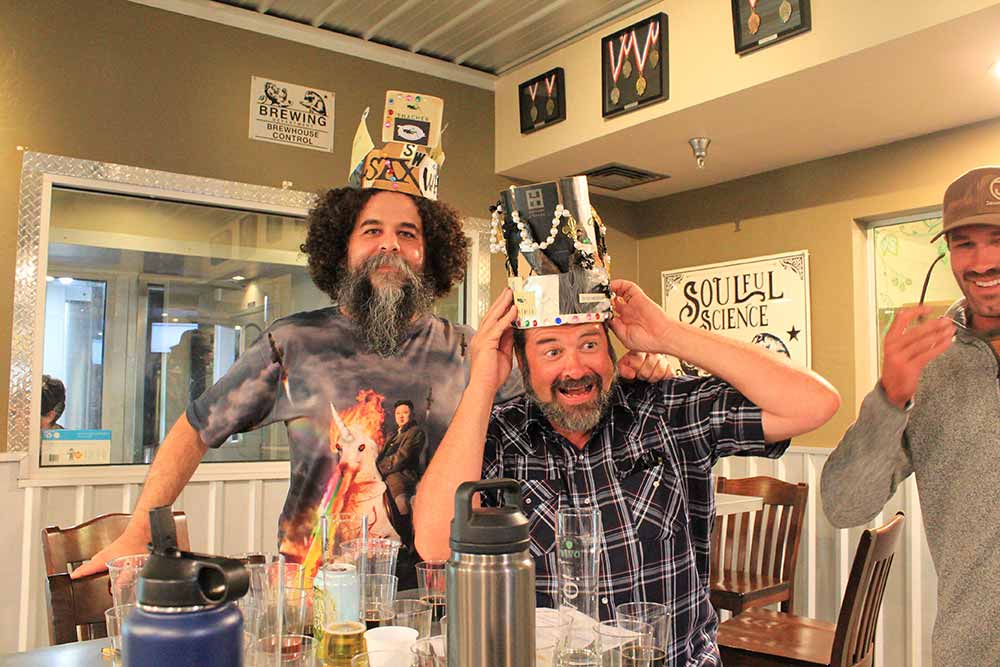
Spoiler alert: Bitches Brew didn’t win this year. But we did place third!
The winning recipe came from Herman’s Favorite Neighbor — a team of Russell From, Taylor Mathiesen of Booker Vineyard, and Paul Rios (and his guest Christian Smith), a Firestone Walker Brewmaster’s Collective Club Member.
Their prized vintage included:
41% Parabola (14% ABV) Aged in Bourbon Barrels
10% Stickee Monkee (12.3% ABV) Aged in Bourbon Barrels
13% Brandy Barrel Barley Wine (13.8% ABV) Aged in Brandy Barrels
8% Whiskey Barrel Wheat Wine (11.7% ABV) Aged in Bourbon Barrels
28% Tequila Barrel Merkin (7% ABV) Aged in Tequila Barrels
“It was immediately likeable and really fun to drink,” says Franchi. “It was beautifully blended and felt like it had great aging potential.”
According to Brynildson, “This year’s winner pours dark with creamy, tan foam. After a few swirls, the beer blossoms with beautiful barrel aromas of bourbon-soaked coconut and brandy-filled chocolates.”
Overall, he says, “This is an absolutely beautiful beer that rises to the occasion of our 25th anniversary.”
For Brynildson the yearly autumnal blending is an exercise in restraint and reflection. Because he actually has no control over the final beer, Brynildson simply sits back, relaxes, and watches winemakers at work.
“It gives us time to think back on what’s happened over the past year and forces us to stay in contact with winemakers, who have become some of my best friends,” says Brynildson. “It’s a cool little world that I feel blessed to be a part of.”
Where Can I Find Firestone Walker’s 25th Anniversary Ale?
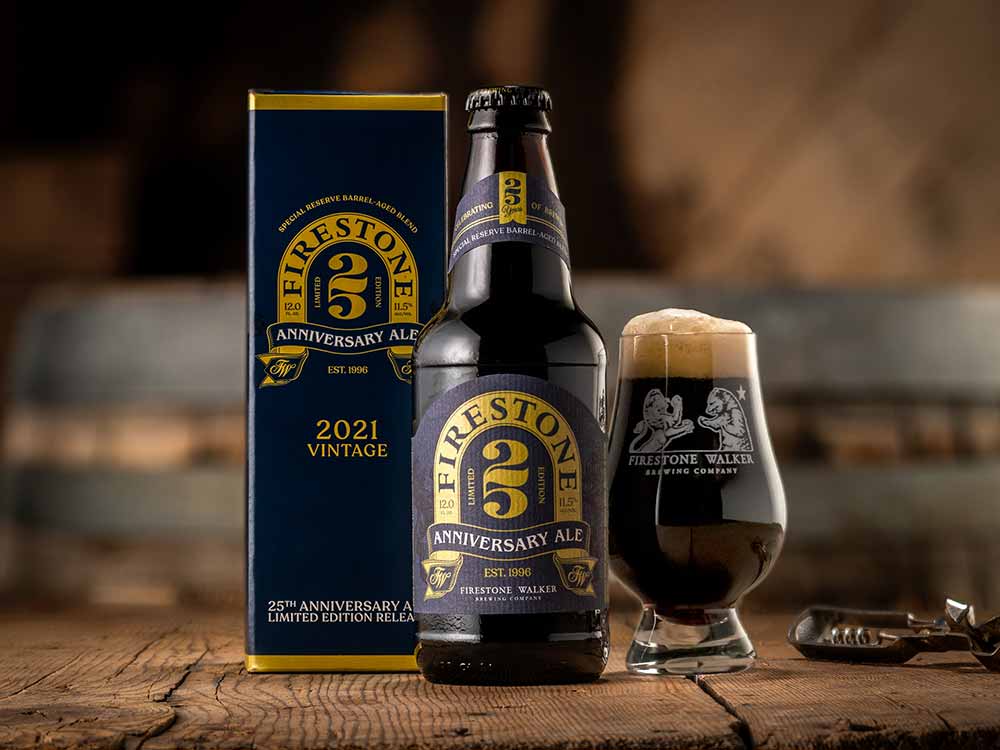
Photography courtesy of Firestone Walker Brewing Company
You can find this tour de force of a beer in three different formats.
First, 12oz bottles of the 25th Anniversary Ale will be released nationwide in the following states: AK, AZ, CA, CO, HI, IA, ID, IL, IN, KS, MD, MN, MO, MT, NC, NE, NJ, NM, NV, NY, OR, PA, TX, VA, and WA.
Additionally, Firestone Walker created The 25th Anniversary Ale Trio Pack featuring the 25th Anniversary Ale along with two of the component beers used in the blending, including Stickee Monkee and Parabola Autumn Edition. This pack will only be available in select states. At the time of publication, Firestone Walker had not released the list of states.
And 750mL versions of the 25th Anniversary Ale will be available in a limited release at all three of Firestone Walker’s California locations and online.

